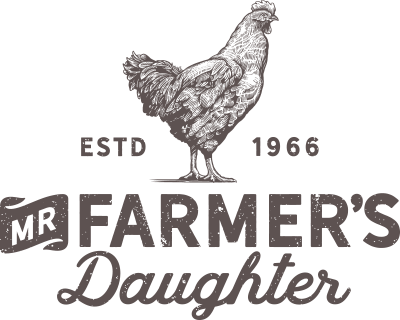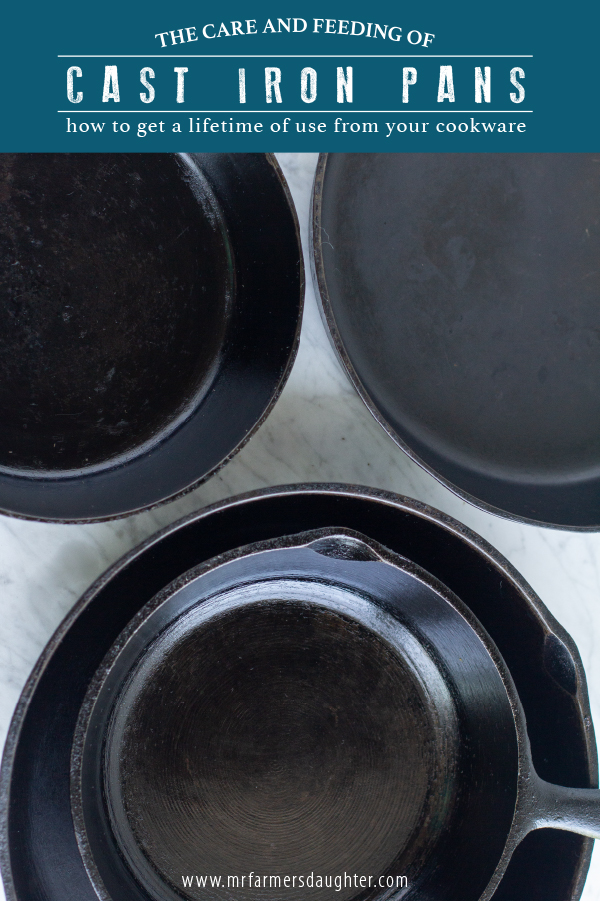
This post has been a long time coming. I see so many posts on social media that are hating on cast iron and talking smack about how horrible it is to use. It hurts my soul. I thought I was finished with posts like this as my intent for the blog was to focus on recipes and not How-to’s. But, I can’t do it. I feel I have a voice and I need to use it to help those who are struggling in the kitchen.
I’ll admit, I don’t struggle in the kitchen. For whatever reason it seems to come pretty easily to me. That wasn’t always the case. A few years after I got married we were still eating frozen dinners and buying lots of prepackaged “food.” My food allergies were the impetus I needed to get real about food and cooking and it changed my life in many ways, including what kind of pans to cook in.
Did you know people have been using cast iron for cooking since the Han Dynasty in China around 220 AD? That’s a long time for people to be hatin’ on their mama’s hand-me-down cooking pans. I’m sure back then they were just thankful to have a solid cooking vessel that didn’t melt in the fire.
I got my first piece of cast iron about 20 years ago. Cast iron wasn’t a trendy thing back then. People were still enamored with their non-stick pans that would have to be replaced every three years. The cast iron I bought was just an old pan that I picked up at Goodwill. I got it because it looked in pretty good shape and it was $3.00. I took it home, washed it and used it right off the bat. I had no idea about seasoning a pan or that others would struggle to cook eggs in their cast iron pans.
I learned the dark side of cast iron when I got my second piece. My eggs constantly stuck and had to do some research to figure out why the two pans were so different.
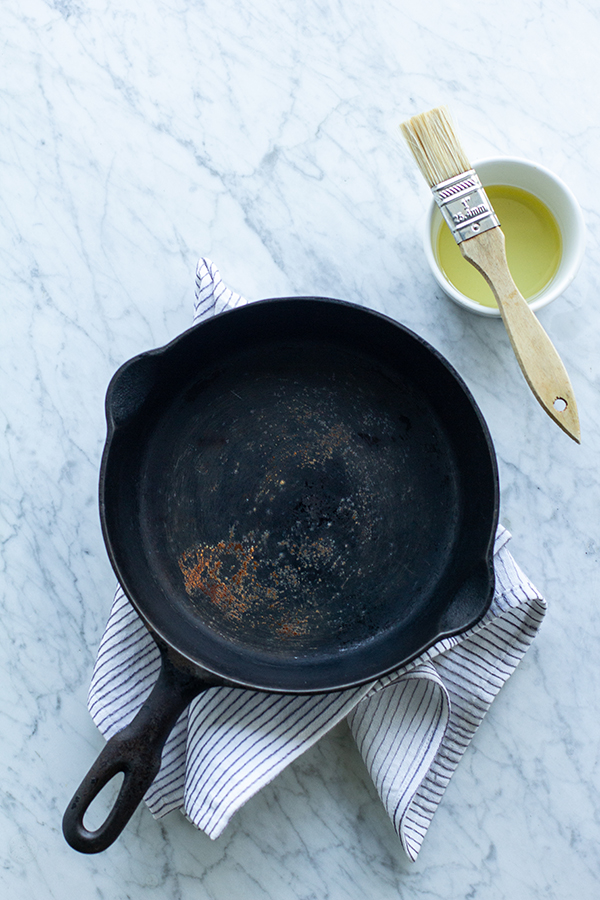
I learned that in order to properly season a cast iron pan you will need to open up the pores of the metal with heat. Once those pores are open, oil will need to be available to fill those pores. Filling the pores and cooling the pan time after time is what creates a hard, non-stick coating on the cooking surface of the pan. The more often those pores are opened, the more oil gets into them. The more often it’s cooled, the more non-stick the surface will be. You can see now why grandma’s hand-me-down cast iron was so coveted by previous generations. It takes time to make the perfect pan.
I have two small pans in which I cook my “dippy eggs” (that’s the PA Dutch term for sunny-side up eggs) that rarely need seasoned because the natural non-stick coating is so thick, they never catch any rust or sticky spots. The cooking surface of the pan is a smooth metal that feels just like a modern non-stick surface but without all the Teflon and chemicals.
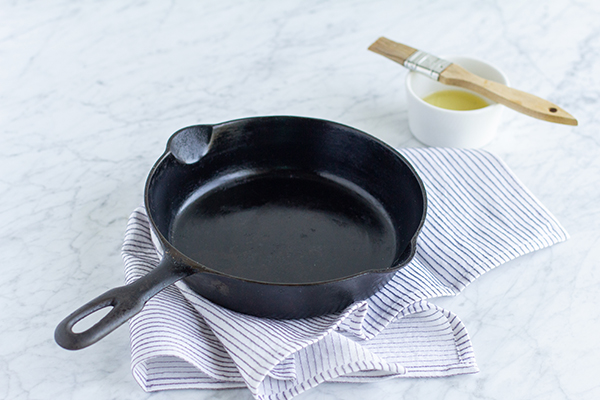
Seasoning your cast iron isn’t rocket science. As long as you understand the pores of the metal need to open and that you need to fill them with fat, you’re golden … or iron, as it is.
We’re huge fans of bacon in our house so the first thing I suggest people do with a new-to-them cast iron pan that needs some seasoning is to cook bacon in it. Lots and lots of bacon. Also, the heating and cooling is key to getting that non-stick surface so if you’re going to eat bacon three separate times this week, cook it in the pan three separate times instead of all at once.
I have also oven-seasoned my pans a time or two, especially if the outside of the pan needs some loving care. Since it’s impossible to cook bacon on the outside of the pan but you still don’t want rust getting ahold of it, you’ll need to heat up your pan in the oven at about 300˚. Iron doesn’t heat up super fast so let it in there for about 15 minutes to get good and hot. Remove it with hot pads and coat it thoroughly with a natural oil placing it on a baking sheet to catch any drips. (More on the types of oil to use later.) You can use a paper towel to coat the pan inside and out, including the handle. Bake for about 15 minutes then remove and coat again with oil, bake for another 15 minutes then turn the oven off and allow the pan to cool inside the oven.
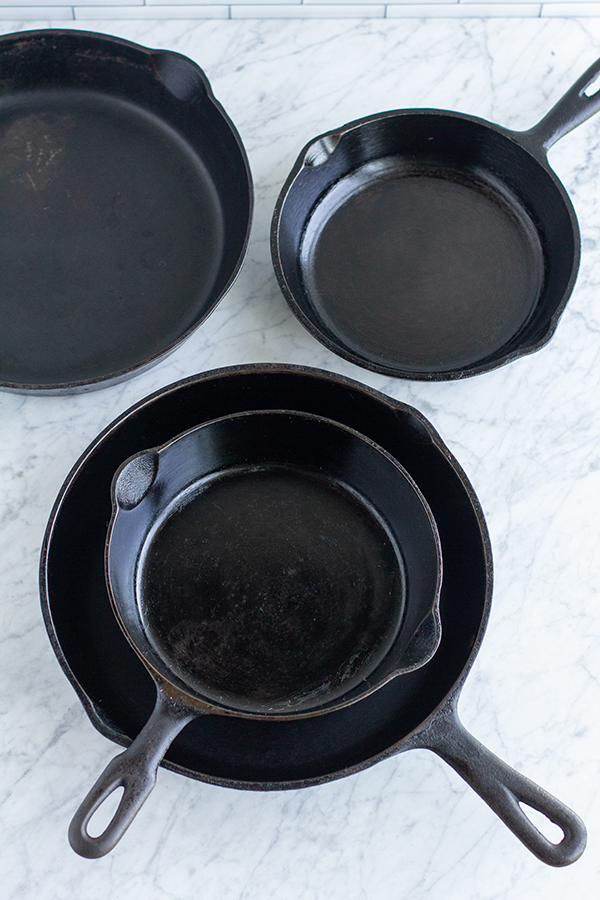
If you want your pans to stay nice, never ever wash them with soap. While I know this goes against many people’s modern-day intuition, washing a cast iron pan with soap will immediately undo weeks to months of seasoning. The chances of rust increase and food will now stick to the pan. To wash, simply run hot water over the inside of the pan and scrub with a stainless steel scrubber and wipe dry immediately. You may add a light coating of oil to store your cast iron and ensure that no rust takes hold.
So, about that oil … brand new cast iron pans will say they are “seasoned” but to me they’re not egg-seasoned. That means that a new skillet right out of the box will not allow your eggs to slide off the surface in the same way a Teflon pan would. You will need to do some more seasoning to get them to that point. They are also seasoned with the cheapest oil available such as soy and cottonseed oil. I never recommend eating industrial seed oils. There is a reason that those oils are tied up inside tiny seeds that humans wouldn’t normally eat.
To properly season a cast iron pan, I use bacon fat, lard, tallow, smaltz, avocado oil, ghee or coconut oil. All these oils have a fairly high smoke point and can be heated to temperatures above 350˚ without breaking down into toxic free radicals.
The other gripe I hear all the time about cast iron is how heavy it is. People don’t like to lift such weighty cookware. To that I say, there is not a professional chef on the planet that would choose to cook in lightweight cookware if they had the choice. A heavy pan allows you to stir a sauce without holding onto the handle. A heavy pan indicates quality. And, a heavy pan of the cast iron variety will last you a lifetime. There is no better value than a $3.00 pan that lasts the rest of your life!
